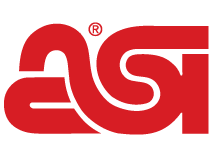Commentary October 22, 2025
What Reebok & PlayStation’s Retro Shoe Campaign Does Well With Packaging & Small Details
With three releases tied to the 30th anniversary of the first console release, Reebok and PlayStation play with color, shape and packaging for a complete nostalgia vehicle.
Key Takeaways
• Reebok and PlayStation leveraged ‘90s nostalgia to appeal to Gen Z, millennials and Gen X by reviving retro sneaker designs and console-inspired packaging.
• The shoebox design mimics the original PlayStation console, turning the packaging into a collectors item and reinforcing brand identity.
• Small design elements like lace locks resembling memory cards and subtle color pops from PlayStation icons add depth and delight to the campaign.
Reebok and PlayStation teamed up for a modern stylish campaign that ticks all of the boxes to drive demand:
There’s co-branding.
There’s manufactured exclusivity.
And, of course, there’s the blending of print and promotional together to form a multifaceted and multidimensional branding experience.
With ‘90s nostalgia all the rage right now among Gen Z, PlayStation and Reebok are bringing back some styles and aesthetics more familiar to millennials and Gen X to commemorate the 30th anniversary of the first PlayStation release. The line includes three different Reebok sneakers – one for each region of the campaign – packaged in shoeboxes that evoke the beloved gray color of the original console and its button iconography.
The sneakers themselves use the retro design that has reemerged in recent years, too: There’s the InstaPump Fury 94 for Japan, the Pump Omni Zone II for U.S. buyers and the Workout Plus in the U.K., with each sneaker also using the gray console color with the multicolored PlayStation logo motif on things like charms and embroidery.
PlayStation has done other co-branding initiatives, but the Reebok team felt that footwear (and its packaging) could be a way for Sony to capitalize on nostalgia in different ways.
“I know the history of PlayStation and who they’ve collaborated with previously, and I hadn’t seen anything come from them from a sportswear brand in particular for a while,” Reebok’s global senior product marketing manager, Mubi Ali, told GQ. “So I just reached out to the team here in the U.K. over LinkedIn to see if they were open for a conversation. It was as simple as that.”
If you look closely, you’ll find smaller details like lace locks that look like the old PlayStation memory cards. (Writer’s note: Kids, you used to have to save your game with a physical memory card and pray each time that it worked. Otherwise, you were starting a new game.)
What Works
The use of the shoebox as part of the campaign elevates the sense of nostalgia and brand cohesion. Choosing vintage sneakers (which are back in style) to evoke that ‘90s vibe is one thing, but by using the packaging to push the PlayStation imagery even further, Sony and Reebok make the entire piece a collectors item.
This can be a lesson for those designing kits for promotional campaigns. The packaging is where it starts. It’s not a barrier to the campaign or just a necessary vessel to hold everything together. It’s the first impression, the ecosystem that the products exist in. When done well, it’s just as much a load-bearing piece of the branding vision as any other product included.
Also, this campaign takes small details for fun surprises. Using the gray color scheme as the dominant hue allows for small pops of color like the PlayStation logo or the button motifs, which is what helped the original PlayStation become so recognizable in the first place.
Other video game console brands, notably PlayStation’s rival Xbox, have used the box motif and the design aesthetic of the console to influence other products in promotional and print campaigns. Distributors and printers can take something like a consumer product and incorporate that or project parts of it onto other products in clever ways to make for an instantly recognizable brand experience, but in a surprising and impressive way.

Product Hub
Find the latest in quality products, must-know trends and fresh ideas for upcoming end-buyer campaigns.

